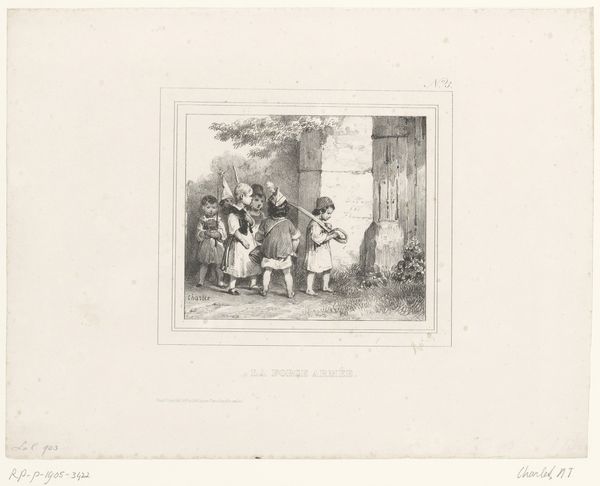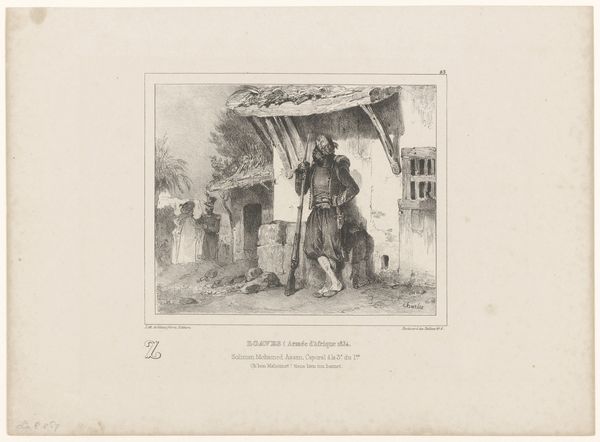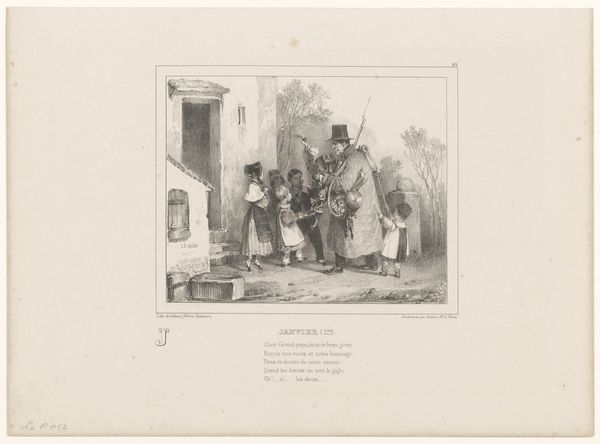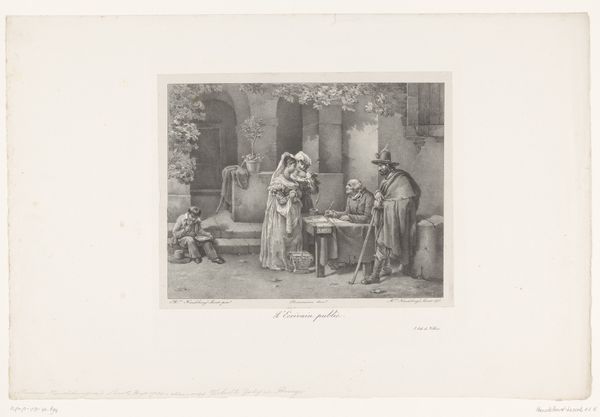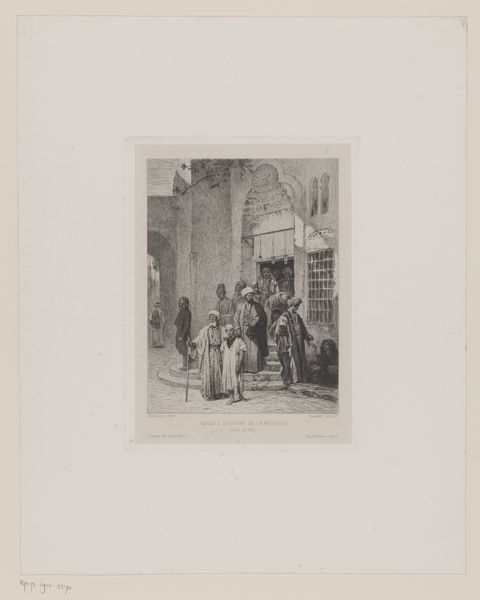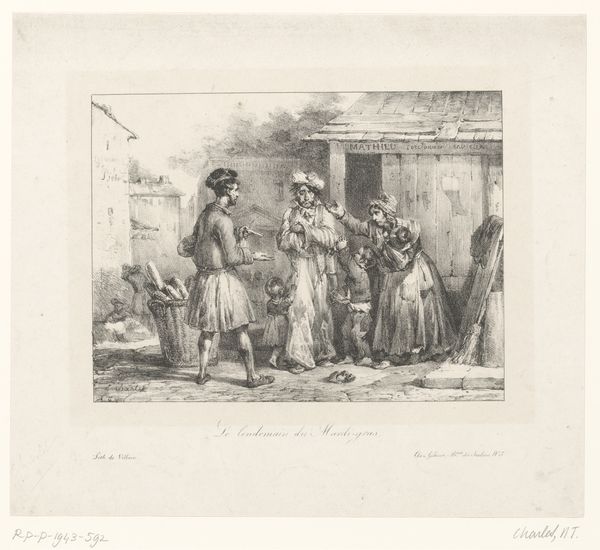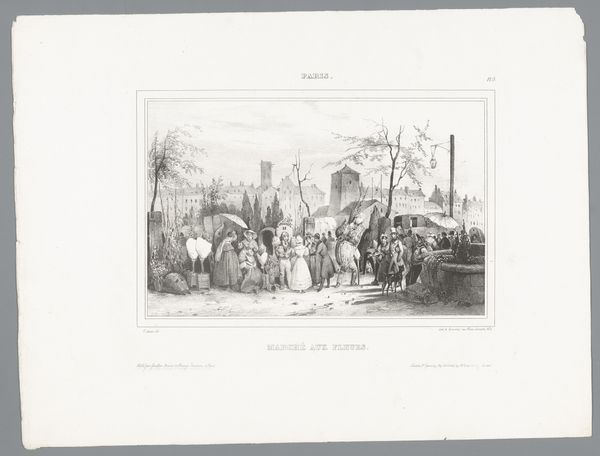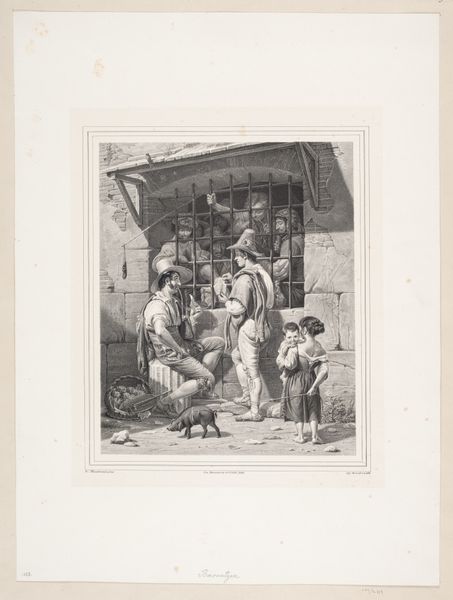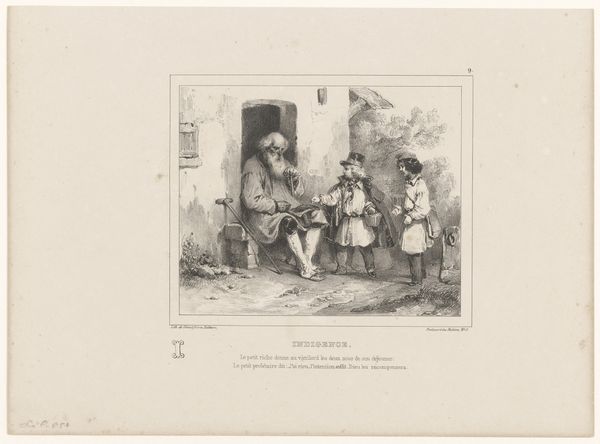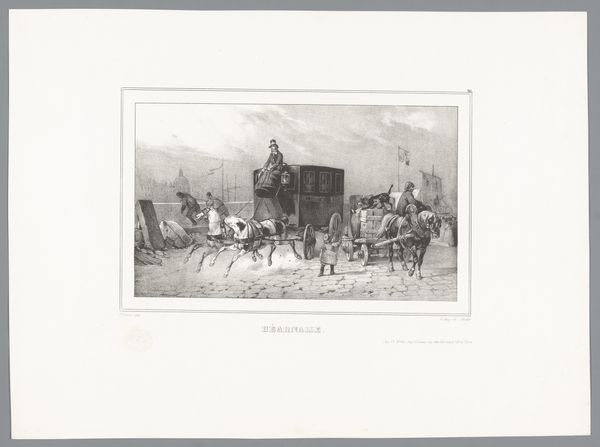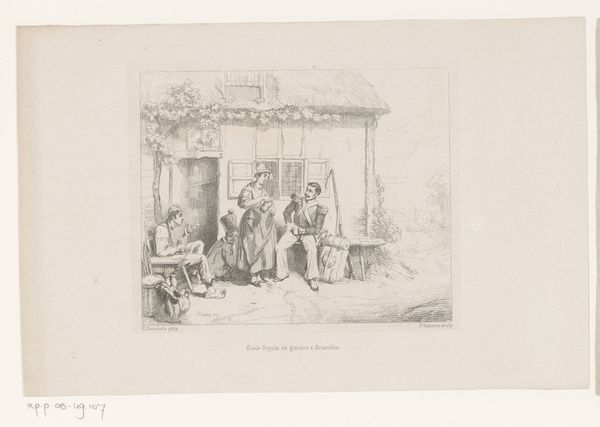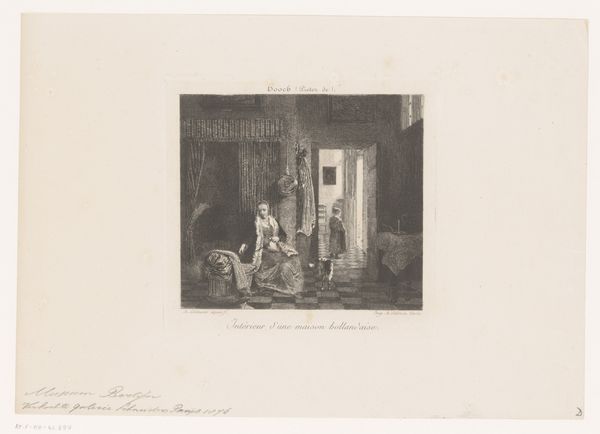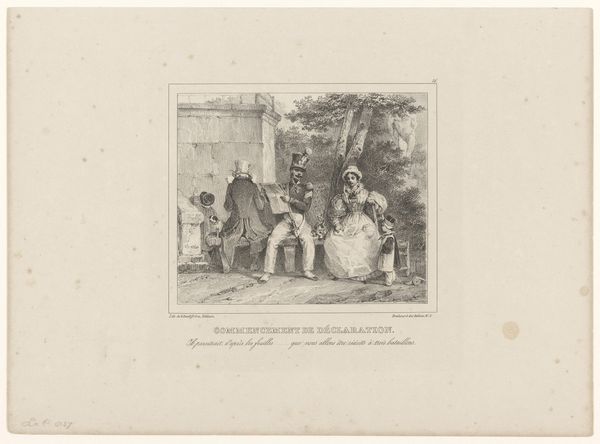
print, etching
#
narrative-art
# print
#
etching
#
old engraving style
#
etching
#
figuration
#
romanticism
#
line
#
genre-painting
Dimensions: height 247 mm, width 338 mm
Copyright: Rijks Museum: Open Domain
Editor: This is "Ruzie," created in 1835 by Nicolas Toussaint Charlet. It's an etching, currently housed in the Rijksmuseum. The scene feels chaotic, almost like a snapshot of a heated argument. What do you see in this piece from a formalist perspective? Curator: Focusing solely on the intrinsic qualities, note the dynamic arrangement of figures and the use of line to create depth and texture. The artist uses cross-hatching extensively, particularly in the darker areas, to build volume and convey a sense of tension. How does the composition itself guide your eye through the narrative? Editor: I think my eye goes from the gesturing figures in the center, across to the darker doorway with a figure standing within, and then to the edges of the frame with figures there. So my eye circles the action within. It's interesting that there seems to be different types of gestures. Does the linearity of the etching contribute to the overall impression of the scene? Curator: Precisely. The meticulous linearity flattens the image, preventing true depth, so your eye traces and remains within the depicted action and never truly penetrates the space. Further, by concentrating all our attention into an action so evidently based on contrastive exchanges, we note an attempt to arrest difference itself as the work’s structural base. Where might we perceive an instance of the arrest of difference? Editor: Perhaps in the stark contrast between light and shadow? Or in the division between inside and outside? It seems as though the printmaker seeks to trap meaning within rigid lines. Curator: Precisely so. And what does the semiotic reading, tracing our observation, now reveal? Editor: This artwork offers a potent example of how formal elements, such as line and composition, collaborate to create a sense of captured narrative and pictorial stillness. The act of looking becomes a process of seeking differences that resolve in stasis. Thank you. Curator: Indeed. Considering this, we begin to apprehend the work as a complex sign, self-enclosed and complete, inviting analysis of the formal vocabulary itself.
Comments
No comments
Be the first to comment and join the conversation on the ultimate creative platform.
